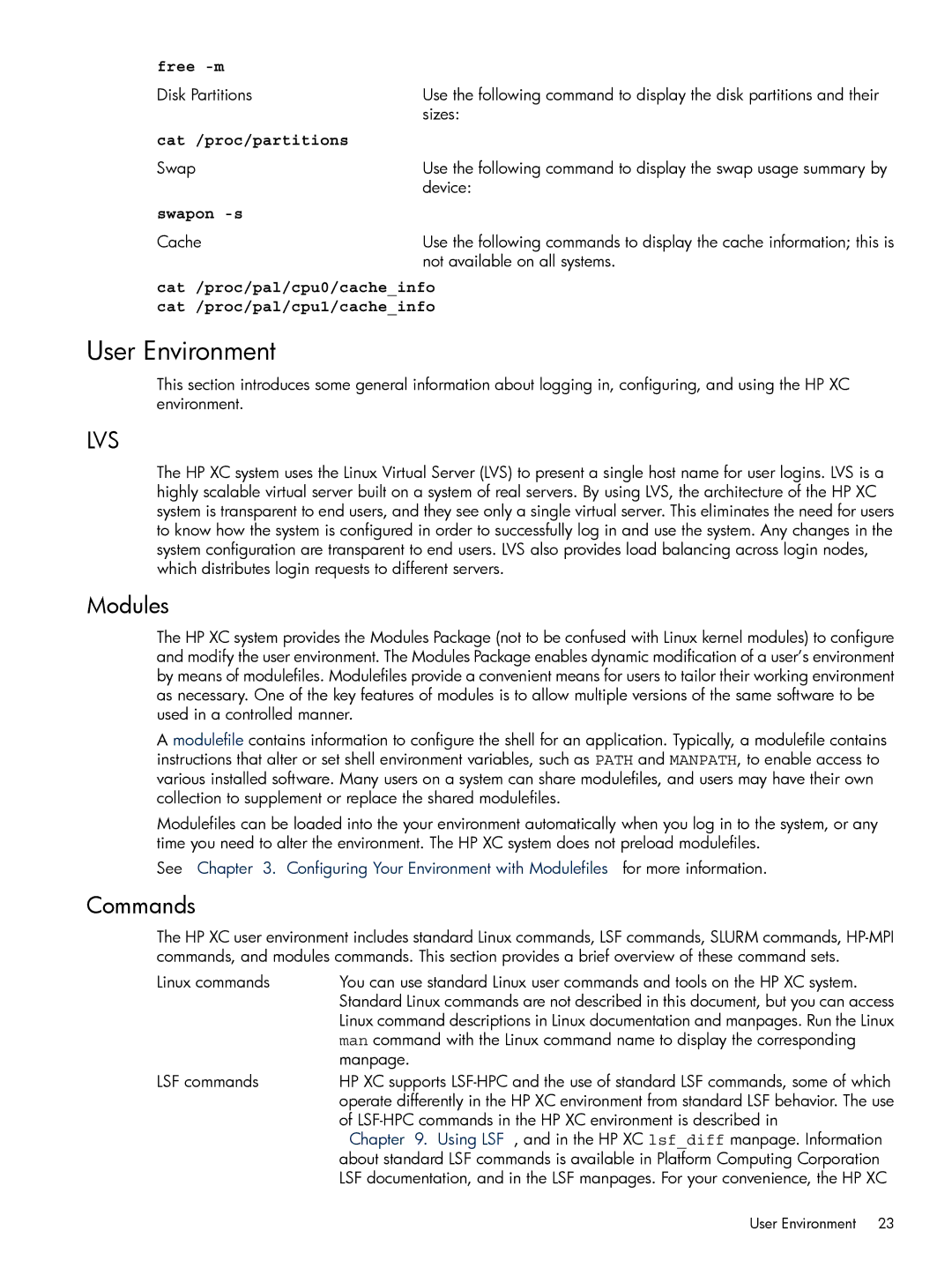free |
|
Disk Partitions | Use the following command to display the disk partitions and their |
| sizes: |
cat /proc/partitions |
|
Swap | Use the following command to display the swap usage summary by |
| device: |
swapon |
|
Cache | Use the following commands to display the cache information; this is |
| not available on all systems. |
cat /proc/pal/cpu0/cache_info cat /proc/pal/cpu1/cache_info
User Environment
This section introduces some general information about logging in, configuring, and using the HP XC environment.
LVS
The HP XC system uses the Linux Virtual Server (LVS) to present a single host name for user logins. LVS is a highly scalable virtual server built on a system of real servers. By using LVS, the architecture of the HP XC system is transparent to end users, and they see only a single virtual server. This eliminates the need for users to know how the system is configured in order to successfully log in and use the system. Any changes in the system configuration are transparent to end users. LVS also provides load balancing across login nodes, which distributes login requests to different servers.
Modules
The HP XC system provides the Modules Package (not to be confused with Linux kernel modules) to configure and modify the user environment. The Modules Package enables dynamic modification of a user’s environment by means of modulefiles. Modulefiles provide a convenient means for users to tailor their working environment as necessary. One of the key features of modules is to allow multiple versions of the same software to be used in a controlled manner.
A modulefile contains information to configure the shell for an application. Typically, a modulefile contains instructions that alter or set shell environment variables, such as PATH and MANPATH, to enable access to various installed software. Many users on a system can share modulefiles, and users may have their own collection to supplement or replace the shared modulefiles.
Modulefiles can be loaded into the your environment automatically when you log in to the system, or any time you need to alter the environment. The HP XC system does not preload modulefiles.
See Chapter 3. Configuring Your Environment with Modulefiles for more information.
Commands
The HP XC user environment includes standard Linux commands, LSF commands, SLURM commands,
Linux commands | You can use standard Linux user commands and tools on the HP XC system. |
| Standard Linux commands are not described in this document, but you can access |
| Linux command descriptions in Linux documentation and manpages. Run the Linux |
| man command with the Linux command name to display the corresponding |
| manpage. |
LSF commands | HP XC supports |
| operate differently in the HP XC environment from standard LSF behavior. The use |
| of |
| Chapter 9. Using LSF , and in the HP XC lsf_diff manpage. Information |
| about standard LSF commands is available in Platform Computing Corporation |
| LSF documentation, and in the LSF manpages. For your convenience, the HP XC |
User Environment 23
